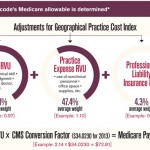CPT Meeting Highlights
During the May 2018 CPT meeting in San Antonio, the CPT Editorial Panel received a code change application (CCA) from Anthem that requested a revision of the arthrocentesis code set (20600–20611) to include the phrase “image guidance,” because the current codes are specific to “ultrasound (US) guidance.” Anthem states that the combination services (bundling of injection/US) are narrow, and replacing “US” with “image guidance” will broaden the reach of the current code set.
As one of the original societies involved in revising the code set, the ACR stated it did not support the request; the current CPT codes for arthrocentesis code series 20600–20611 already allow specificity and clarity for the code set. Thus, the change could allow unnecessary overutilization of other imaging equipment and dilute the value of the code descriptor. The code change is, therefore, needless. The level of work and equipment in the existing code set is typical; the work, cost and complexity are different and should remain separately reportable. For example, fluoroscopy or CT-guided imaging both present radiation exposure, requiring the study room to have adequate shielding, and there are different regulation requirements to be met than with US. US image interpretation is distinct and fundamentally different than looking at a conventional radiograph/fluoroscopy. Also, the parenthetical included in the code sets clearly defines how to appropriate code for other modalities in the 70000 series, which is consistent with coding guidelines for the intended use of the code(s).
Further, changing the code descriptor to “image guidance” would be beyond the RUC mandate and create additional RUC ramifications. This change would not be editorial, but would require a new code change application and resurveying, which will be difficult given the infrequent use of the other types of imaging guidance for these procedures. Fluoroscopic guidance and US guidance have significantly different practice expenses associated with them, and the current codes are valued with US guidance bundled. The CPT Editorial Panel voted not to accept the code change request from Anthem.
The Importance of Input
The work at the AMA RUC and CPT meetings is filled with regular reviews of procedures and services to determine whether they are appropriately valued or overvalued for the Medicare physician fee schedule. It is crucial the ACR participate in these meetings because it allows the College to provide input about the medical services performed by rheumatology providers, who are on the front lines of caring for patients every day.
